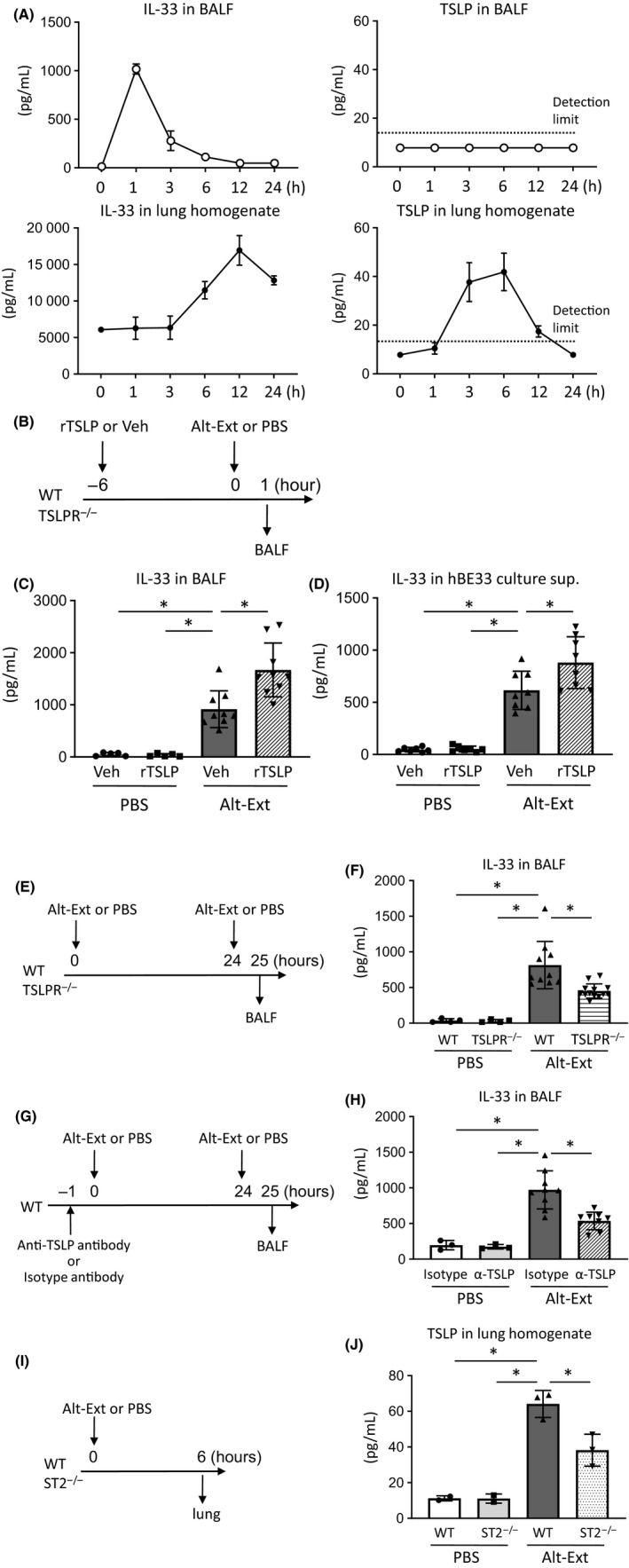Figure 3.

TSLPR signaling increased IL‐33 release and IL‐33 receptor (ST2) signaling increased TSLP expression in the lung. A, The time course of TSLP and IL‐33 in bronchoalveolar lavage fluid (BALF) and lung homogenates after one Alternaria extract (Alt‐Ext)‐challenge. B, E, G, I, Diagrams of experimental design using mouse model to detect IL‐33 in BALF and TSLP in the lung. C, IL‐33 protein level in the BALF from wild‐type (WT) mice challenged with Alt‐Ext or PBS in the presence or absence of recombinant TSLP (rTSLP) treatment. D, IL‐33 protein level in cell‐free culture supernatant (sup) from human bronchial epithelial cells stably expressing IL‐33 (hBE33) challenged with Alt‐Ext or PBS in the presence or absence of human recombinant TSLP treatment. F, IL‐33 protein level in the BALF from WT and TSLPR−/− mice challenged with Alt‐Ext or PBS. H, IL‐33 protein level in the BALF from WT mice challenged with Alt‐Ext or PBS in the presence or absence of anti‐TSLP antibody (α‐TSLP) treatment. J, TSLP protein level in the lung homogenates from WT and ST2−/− mice challenged with Alt‐Ext or PBS. The data are a combination of 2 independent experiments and shown as mean ± SD (n = 3‐9). *P < .05
